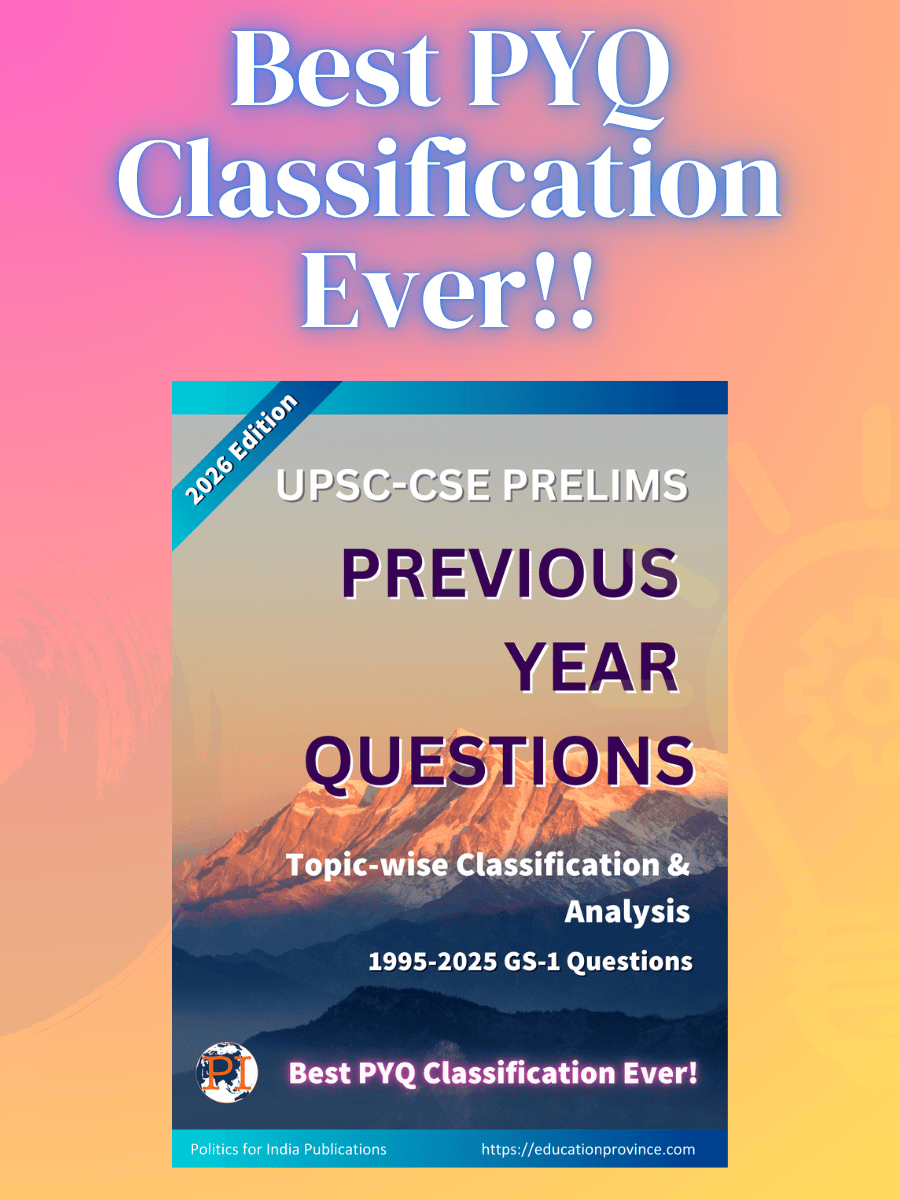Last Updated on April 24, 2025 by Admin
While you do need to study all subjects very well for CSE Prelims, just studying is not enough. Apart from covering syllabus – the strategy you adopt for the actual exam is also equally, if not more, important. Thus, despite studying everything, a bad strategy can cost you a seat in UPSC Mains. On the other hand, a good strategy will compensate somewhat for what you may have missed in your studies. With this perspective, we will explore the best ways to strategize GS mock tests and do effective time management during actual exam.
Understanding the Exam Environment
The environment of the actual exam hall can be dramatically different from your study room or coaching centre. The real exam setting – with strict time limits, an official OMR sheet, and the pressure of competition – affects decision-making, recall, and confidence. Many aspirants who perform well in mock tests find themselves nervous on exam day. Such stress can lead to “silly mistakes” or blanking out on facts you knew very well. As research suggests, large spikes in the stress hormone cortisol can impair focus and memory recall.
This should not come as a surprise, and there are examples of student scoring more marks in same test, after solving in different environment. This underline the importance of conditioning yourself to the exam environment.
The key is to simulate exam environment during your preparation itself. You should try taking mock tests in an exam-like setting – sit at a desk without distractions, set a timer for 2 hours, and use an OMR sheet to fill answers. When you practice in like this, you become familiar with the pressure and learn how to maintain composure. Over time, your decision-making in the exam hall becomes more rational and you learn to trust your preparation and instincts instead of second-guessing every small thing.
Strategic Approach to Solving Questions
With 100 questions to solve in 120 minutes, having a strategic approach is essential. Rather than attempting questions in a random sequence or getting stuck too long on tough ones, we recommend an iterative approach to maximize score and accuracy. The idea is simple: go through the paper in multiple (2-3) rounds, handling easy and hard questions differently. We had discussed this approach for CSAT as well and you can read it in this article.
First Iteration
After getting question paper, you should start by quickly scanning through all questions and solving the easy ones immediately. These are the questions you read and instantly know the answer to. Attempt them confidently and mark the answer on your sheet. Skip anything that you’re unsure of on the first pass. You can mark these unsure questions in the question booklet to revisit later, but don’t waste time wrestling with them now. This first round should ideally net you all the questions you are 100% sure about.
The first iteration might last about 40 minutes, by the end of which you have answered perhaps ~30 easy questions, securing those points.
Second Iteration
In second round, you can focus on the questions you marked or skipped, those that needed a bit more thought but seemed solvable. In this round, use techniques like elimination and intelligent guessing. Often, you can eliminate one or two obviously incorrect options even if you aren’t certain of the right answer.
This round should take about 40 minutes. By the end of Round 2, ideally you have attempted another sizable chunk of questions (maybe another ~30 or so), which brings your total attempted into the range of 60, attempted with confidence.
Third Iteration
Now with the remaining time (say the last 30-40 minutes), consider a third round for the hardest questions – the ones you truly had “no clue” about. This is where you make calculated decisions on whether to attempt or leave each remaining question. Check how many you’ve already attempted and how confident you are in those. If you’ve attempted, for example, 75+ questions and are confident in them, you might choose to leave the very difficult questions to avoid negative marks.
On the other hand, if you feel your attempt count is low, you may take a few educated guesses to boost it.
Attempt a tough question in this round only if:
- You can eliminate at least two options or narrow it down to a 50-50 guess.
- You recall some related fact or have a gut feeling after elimination.
Skip it if:
- You are totally clueless (blind guesses are dangerous with negative marking), or
- If time is almost up and you don’t want to spoil your accuracy.
Essentially, round 3 is about maximizing your score without recklessness – taking a shot at high-risk, high-reward questions only if you have a reasonable chance.
By following this iterative approach, you ensure that you don’t miss out on easy questions (by getting stuck on a hard one early), and you systematically increase your attempt count in a controlled manner.
Further, you are constantly moving and not getting stuck, which keeps your confidence up. As you practice this approach in mocks, it will become second nature in the real exam.
Also, you can make some smaller changes to this strategy based on your own experience in mock tests or go for only two rounds of iteration instead of three. But the core idea stands – don’t approach the paper in a single linear sweep from Q1 to Q100 without prioritization. Always think in terms of securing easy marks first, then fighting for the trickier ones.
How Many Questions to Attempt in Prelims?
One of the perennial debates among UPSC aspirants is: “Out of 100 questions in GS Paper 1, how many should I attempt?” The answer isn’t fixed – it depends on the difficulty of the paper and your comfort level – but there are important guidelines and trends to consider.
In UPSC Prelims, you need to clear a cut-off score (which varies year to year). Cut-off marks have fluctuated significantly based on paper difficulty. For example, in 2019 the GS1 cut-off was around 98 marks, whereas in 2023 it dropped to roughly 76 marks. In simpler terms, candidates needed 49 correct answers (assuming no negatives) to clear 2019, but only 38 correct answers in 2023.
This illustrates a key principle: the tougher the paper, the fewer questions you may need to clear the cut-off (and the more careful you can be with no. of attempts); conversely, an easier paper may force you to attempt more questions to score higher.
So, how to decide your attempt count? First, evaluate the paper’s difficulty as you solve it. Again, with iterative approach, you get to gauge the difficulty level of paper as you finish the first iteration.
If you find the paper is very challenging (you’re unsure about many questions), know that most others are in the same boat – cut-off will likely be lower, and accuracy will matter more. In such a scenario, it might be wise to attempt on the lower side (maybe in the range of 75-80 questions) focusing only on those where you have some confidence.
If the paper feels moderate or easy (you find many questions straightforward), you should push your attempts higher (80-90-95), because the cut-off will be high, and you can’t afford to leave too many questions that you might have gotten right.
To give you a number, you should solve around 75 to 90 questions in any given year. With 75+ attempts, even if several of them are wrong, you have room to score about 100 marks if you maintained decent accuracy.
Another factor to keep in mind is, your accuracy rate. Suppose in mocks you notice that even with aggressive attempts (say 85-95 questions) you can keep ~70-80% accuracy. In that case, high attempts will work for you. But if your accuracy plummets when you attempt beyond 75, then you should recalibrate.
Track your accuracy vs attempts in mock tests and decide your optimal attempt count accordingly.
Thus, two factors will play a crucial role in deciding number of questions to attempt. Your own experience with mock tests, your accuracy level etc. and the difficultly level of exam. While the former aspect will get solidified before actual exam, the second aspect depends on the question paper you get in exam hall.
Conclusion
General Studies Paper 1 of UPSC Prelims is as much a test of strategy as it is of knowledge. Remember, mock tests are your testing ground. Use them not just to gauge knowledge but also to refine your techniques for the actual exam. The exam rewards not just hard work, but smart work as well. What we’ve written above are tried and tested by toppers, so don’t take them lightly and build your own custom strategy on top of it. Best wishes!
Regards,
Abhijeet Pimparkar












thank you for your valuable guidance, sir